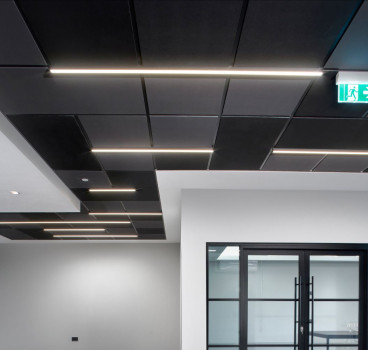The true cost of a failed project bid
Major construction projects begin long before any ground is broken. The public tender or private invitation to bid is only the visible tip of a process that can consume weeks or months of concentrated effort. For the companies competing, the submission of a bid is the culmination of an intense, resource-draining exercise that mobilises expertise across multiple disciplines. The financial cost is high, but the less visible toll on teams and corporate momentum can be even greater when those bids fail, writes John Ridgeway.
Preparing a bid for a large-scale project is not a simple matter of submitting a number. It involves technical proposals, financial modelling, risk assessments, compliance documentation and often fully developed design concepts. Each of these elements requires specialist input. Engineers refine construction methods and sequencing. Quantity surveyors generate detailed cost breakdowns. Legal teams ensure compliance with contractual and regulatory requirements. Project managers coordinate the flow of information and maintain version control.
These professionals are often pulled from billable work to focus on the bid. That diversion of labour has an immediate opportunity cost. In a busy firm, staff time allocated to bidding means other projects move more slowly, or temporary staff are brought in at additional expense. Even if the bid preparation is handled by a dedicated pre-construction team, their salaries, software licences and overheads must be justified by eventual contract wins.
External costs are significant. Detailed surveys, soil testing and site visits can require commissioning third-party specialists. If the tender demands full design proposals, architects and engineers may spend hundreds of hours producing drawings and specifications that will never be used if the bid fails. In design-and-build contracts, 3D modelling and visualisation work are often expected, adding further expense in specialist software and operator time.
Marketing departments become involved to prepare presentation materials, videos and branded submission documents that stand out to evaluators. Professional writers and bid consultants are frequently engaged to help articulate value propositions and ensure the proposal is compelling. All of this incurs costs that are not recoverable without a win.
The competitive environment
Construction bidding is rarely conducted in a vacuum. Competitors are engaged in similar exercises, each trying to differentiate themselves on price, quality, innovation, or delivery speed. This competitive pressure drives companies to invest more heavily in the presentation and thoroughness of their proposals, increasing bid preparation costs further.
In some sectors, the bar for bids has risen so high that contractors essentially provide a substantial portion of the early project development work for free. Clients expect solutions to complex logistical challenges, detailed alternative design options and precise construction schedules before awarding a contract. These demands push bid costs to levels that can be disproportionately high relative to the profit margins available on the project itself.
For public sector projects, strict procurement rules add layers of complexity. Meeting the requirements for environmental impact assessments, diversity and inclusion commitments, health and safety certifications and proof of financial stability means preparing extensive supporting documentation. These compliance measures, while important, expand the scope of the bid package and require multiple internal approvals, adding more time and cost.
Time spent on a bid is not simply a matter of counting hours worked. Bid cycles can stretch across several months, during which market conditions, labour availability and material prices may change. This forces teams to continually update their cost estimates and risk models.
During this period, senior managers may be heavily engaged in bid strategy meetings, negotiations with potential subcontractors and stakeholder briefings. This diverts their attention from operational oversight and business development in other areas. In effect, the company takes on the time risk of concentrating too heavily on a single opportunity. If the bid is unsuccessful, that time investment yields no direct return and may have hindered progress on other initiatives.
The scheduling demands of bids often compress other work into tighter deadlines, causing strain on staff and increasing the risk of mistakes. In extreme cases, teams work long hours and weekends to meet submission deadlines, impacting morale and productivity long after the bid has been delivered.
Related read: How climate and technology are forcing insurers to rethink risk in construction.
The psychological dimension
Perhaps the least tangible yet most profound cost of a bid is the emotional investment of the team involved. Preparing a bid demands collaboration under pressure. Staff members pour creativity, technical ingenuity and professional pride into crafting a proposal they believe can win. Weeks of problem-solving, coordination and refinement build a sense of ownership over the potential project.
When the outcome is negative, the disappointment can be sharp. A “no” is not simply a rejection of numbers on a page - it is a dismissal of the collective effort and vision of the people behind it. This can dent morale, especially if multiple bids have been lost in quick succession.
The psychological toll can also extend to leadership. Senior managers responsible for securing work may feel the pressure of expectations from shareholders, boards and employees. A failed bid can lead to difficult internal discussions about strategy, resource allocation and even the viability of pursuing certain markets.
Every bid is an investment decision. Companies must weigh the likelihood of winning against the cost of participation. Some projects attract so much interest that the odds of success are extremely low. In such cases, the true cost of bidding includes the risk of sinking resources into a highly competitive contest with little chance of return.
Yet the need to maintain a visible presence in the market can drive companies to participate in bids even when the probability of winning is small. Declining to bid on high-profile projects can send the wrong signal to clients and competitors, potentially leading to fewer invitations in the future. This strategic dilemma forces contractors to accept higher bid costs as the price of market positioning.
In some markets, bid costs can be partially mitigated by pre-qualification processes that limit the number of contenders. Even then, the competition is intense, and the resources required to pass the pre-qualification stage are themselves substantial.
A lost bid has ripple effects beyond the disappointment of the immediate team. Financially, the unrecovered bid costs reduce profitability for the period. Operationally, teams must quickly reassign staff back to billable projects or other bids, often without the recovery time needed to regain focus.
There can also be reputational consequences. A company that repeatedly loses high-profile bids may find itself less frequently invited to tender. Even where bid evaluations remain confidential, industry networks are small and word spreads quickly about which firms are winning work.
For publicly traded construction firms, a string of unsuccessful bids can influence investor confidence, particularly if the projects were central to forward revenue projections. The market may interpret the losses as a sign of declining competitiveness, affecting share prices and future capital raising.
Recovering value from an unsuccessful bid
While the sunk costs of a failed bid cannot be recovered directly, companies can extract some value from the work done. Elements of technical proposals, designs, or methodologies can often be adapted for future bids. The process of developing a bid can also expose inefficiencies, prompting improvements in internal systems and communication.
Some contractors conduct thorough post-mortems on lost bids, analysing client feedback where available to refine their approach. Others maintain a library of bid components -templates, case studies, design elements - that can be repurposed to reduce costs on future submissions.

However, this recovery of value depends on disciplined knowledge management. Without proper documentation and archiving, much of the intellectual effort invested in a bid is lost with the outcome.
To reduce the emotional strain of bid losses, companies need to cultivate resilience in their teams. This involves setting realistic expectations from the outset, maintaining a balanced portfolio of opportunities and recognising the quality of work done regardless of the outcome.
Celebrating the collaborative effort and skill involved in producing a strong bid can help mitigate the sense of waste that accompanies a rejection. Open communication about the reasons for pursuing or declining a bid also helps staff understand the broader strategic context.
Leaders can further protect morale by ensuring workloads are managed to avoid burnout during bid preparations. Where possible, bid work should be planned so that individuals are not routinely required to sacrifice personal time to meet deadlines.
An overlooked consequence of the intense resource demands of bidding is the constraint it places on innovation. When teams are consumed by the short-term pressure of meeting submission deadlines, there is little time left for developing new technologies, refining methodologies, or pursuing research and development.
This short-term focus can lead to a cycle in which companies become highly efficient at producing bids, but less capable of evolving their core capabilities. Over time, this may erode competitiveness, especially in markets where clients are increasingly looking for innovative approaches to sustainability, safety and efficiency.
The true cost of a project bid is not just the direct financial outlay, but the combination of opportunity costs, emotional impact, strategic risk and potential innovation slowdown. For many contractors, the solution lies in disciplined bid-no bid decision-making. This means applying rigorous criteria to assess the alignment of a project with the company’s strengths, capacity, and strategic direction.
Some firms are adopting data-driven approaches to bidding, using analytics to identify patterns in past wins and losses and refining their pursuit strategies accordingly. By targeting bids with a higher probability of success, they can allocate resources more efficiently and reduce the frequency of high-cost, low-return pursuits.
Bidding is an unavoidable reality in the construction industry, and for major projects, it is a high-stakes endeavour. The financial cost is measurable in salaries, consultant fees and overheads. The hidden costs - lost time, diverted focus, staff burnout and the sting of rejection - are harder to quantify, but just as real.
Additional Blogs

When fire breaks out who really knows the system
The story that caught my attention recently wasn’t about fire growth or building loss, it was about confusion. Specifically, the confusion faced by the fire service when arriving at buildings...
Read moreThe design and development of Nexus Layouts
When Zentia set out to rethink the suspended ceiling, the brief was clear: deliver greater creative freedom for designers, more distinctive visual identity for clients, and a solution that could keep...
Read more

The 100-year construction project or why longevity Is the new sustainability
For decades, the construction sector has defined sustainability through metrics such as operational energy, embodied carbon, material efficiency and circularity. These measures remain vital, but a...
Read more